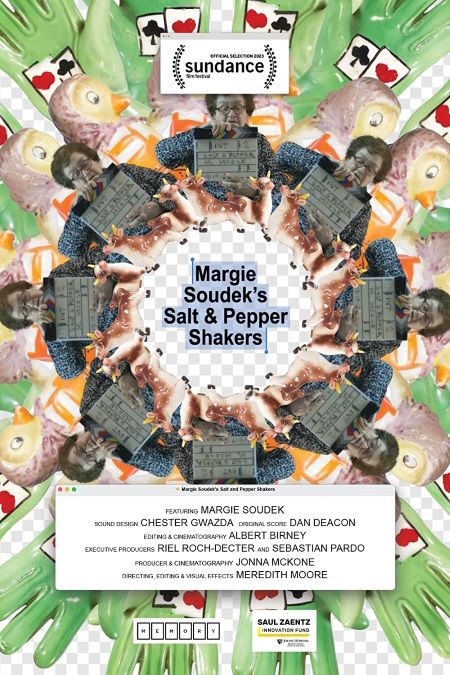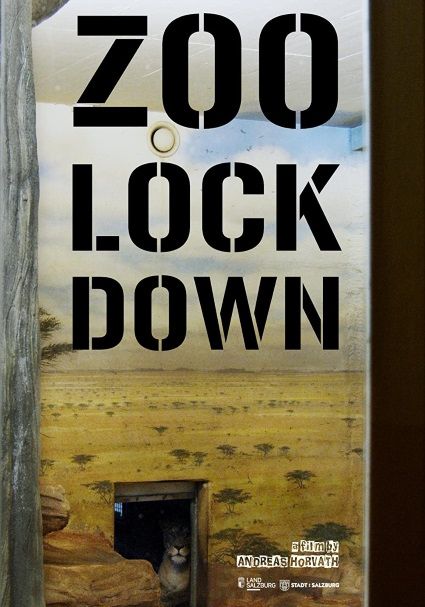After having missed last year's Wisconsin Film Festival due to Covid, I was quite excited for this year's edition. My festival began yesterday evening down on campus for a screening of Zoo Lock Down by Austrian auteur Andreas Horvath.
Well, that's not exactly true as Zoo Lock Down was preceded by a short called Margie Soudek's Salt and Pepper Shakers by Baltimore filmmaker Meredith Moore.
The collector of salt & pepper shakers of the title is Moore's grandmother. The movie is partly about the filmmaker asking her grandma about her enormous collection of shakers that she has amassed since the mid-1940s. It is also partly about Moore plying her trade as a visual effects expert on images of Margie using Adobe After Effects.
I appreciated that Moore took a playful approach to her subject matter. But I just did not find shots of a computer screen with footage of Margie being manipulated to be that meaningful. I can understand how it would be for Moore but, for me, it came across as ostentatious and needlessly meta. At one point - I hope I have this right - there's some dialogue asking about the meaning of the movie. We cut to a computer screen with an open instance of the Mac OS equivalent of Notepad and themes are typed into that window.
It was playful but felt cold to me. As if a set of tools - a computer and its software - imbued people with meaning.
I found Zoo Lock Down much more amenable.
When Covid sent us into lock down, the Salzburg Zoo closed to visitors but life went on as before. All the creatures great and small still needed to eat, enclosures to be cleaned, and so on. Horvath spent some time at the zoo chronicling the lives of various animals as well as giving us a glimpse into the life of a zookeeper as the human animals care for the zoo and its denizens.
Horvath takes a direct cinema approach here, generally speaking, with his camera capturing events as they happen with live sound. There are no narrators to explain things to us, no talking head interviews. Just life unfolding at the zoo for its myriad of inhabitants.
However, he doesn't simply try to present us with an "objective" view of his subject. (It'd be fun to watch Frederick Wiseman's
Zoo for comparison now.) Rather he uses the soundtrack, editing, and some really nice shot composition to imbue character into the animals and give the viewer a playful sense of life at the zoo.
For instance, there's a shot with a gibbon high up in a perch in its enclosure in the middle of the frame while a zookeeper sits at desk to the right. A nice primate family photo. Horvath alternates scenes with natural sound and those with what I think is his own synth score. The cries of the alpacas being shaved are harrowing while there are a couple scenes where rather dark music plays over shots of small furry creatures having dinner and it's an amusing contrast. But he went to that well too many times for my taste. At one point I found myself watching spider monkeys(?) eating and there's some ominous Lynchian music playing on top of the shot that made me wonder if we had been transported to the Black Lodge's zoo. It felt so incongruous to me and I couldn't conjure any stylistic meaning to it.
But there was unabashed joy to be had watching a pair of simians excitedly run around and swing from tree branch to tree branch with exuberance after a storm had passed. The ring-tailed lemurs almost stole the show with their displays of agility and their trickster ways. For example, they carelessly run along the back of a rhino to get to a meal in one scene and in another they take over the visitor cafe where they crawl over the chairs and one casually poops at the stand.
Horvath is a trickster in his own way as he plays with our expectations. A man enters a tank full of piranha which made those of us who have seen Joe Dante's 1978 movie of the same name a bit anxious. And would that alligator (crocodile?) ever move?
Despite the odd misstep, I thoroughly enjoyed Zoo Lock Down.


No comments:
Post a Comment